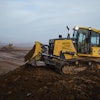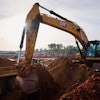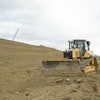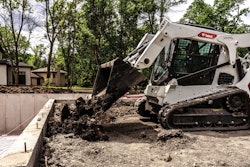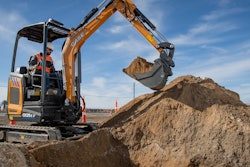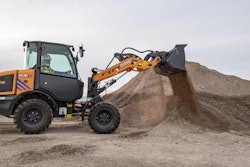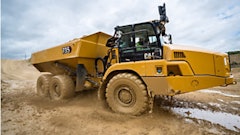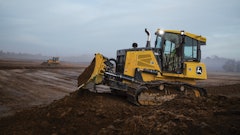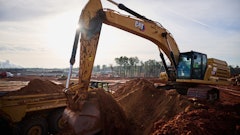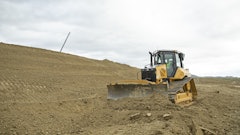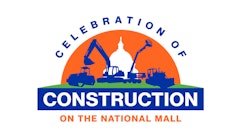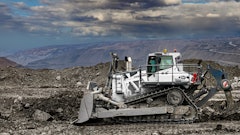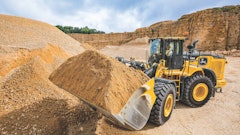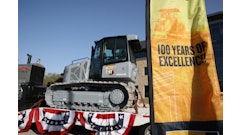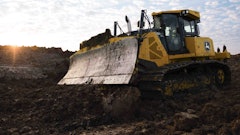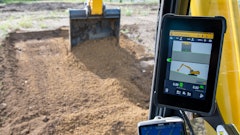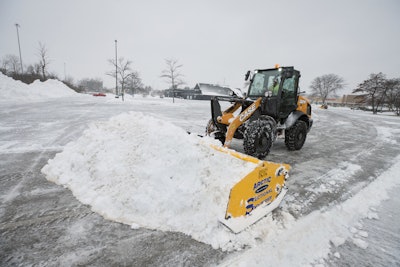
Equipment rental companies don’t have it easy. There is no crystal ball to help with forecasting, purchase decisions, rental rates, etc.—although ARA projects continued growth over the next five years. Larger rental companies continue to buy their competition.
As with many industries, the one constant is change. And the businesses that succeed are those that are built to roll with the punches. Extreme utilization and rentability help, too, and that’s where compact equipment has served as a foundation for many businesses in recent years.
In this article, we’ll look at some of the most sought-after compact equipment categories, and then share some basic tips for further ensuring you’re getting the most out of that equipment fleet.
Mini Excavators
These are typically excavators with an operating weight of less than 13,500 pounds and they go by many names: mini; compact; small. The smallest excavators can fit through a doorway, and the largest could require those who transport it to have a commercial drivers’ license (CDL). While it started out as a powered replacement for a shovel, the mini excavator has become a sophisticated workhorse in the construction industry. With dozens of bucket sizes and hundreds of attachments, the mini excavator is rented by landscapers, homeowners and large contractors alike, and they are generally easy to operate. Most mini excavators include a pivot boom; 360-degree upper-structure swing; boom, arm and bucket movement; and rubber or steel tracks. Lately, mini excavators are loaded with options including premium cabs; retractable undercarriages; six-way dozer blades and hundreds of attachments. Mini excavators are also the perfect platform for electrification as they operate mostly in urban areas and confined spaces. CASE will be making some news on that in 2023. These machines are extremely versatile and an excellent addition to any rental fleet.
Skid-Steers
Skid-steers have anchored equipment rental businesses for years. Quick and versatile, the skid-steer can go almost anywhere at any time. With different lift capacities, lift styles, cab features and tire choices, skid-steers are used by a broad range of contractors and industries, as well as rented to the occasional weekend warrior. From a stripped-down open cab with mechanical controls to an enclosed cab with a large LCD screen, heated seat and hydraulic coupler, these machines serve many different customers for many varied tasks.
Compact Track Loaders
The fastest growing market segment in both the equipment rental industry and the equipment industry as a whole, compact track loaders are stable and have lower ground pressure than their skid-steer counterparts. While compact track loaders (CTLs) are turf-friendly and have lower ground pressure, they are generally higher in price than skid-steers. But CTLs are heavier and can push and lift more. Rental customers appreciate the pushing power and traction, and rental stores can usually charge a higher rate than skid-steers.
Backhoe Loaders
It’s been a popular position to declare the decline of backhoes, but these machines are still very relevant in the rental market. More comfortable and productive backhoes with a skilled operator can do heavy work that would take multiple trips with smaller equipment. In addition to the "two-machines-in-one" concept, a huge advantage of a backhoe is roadability. Driving a loader and an excavator down the road at 30-plus miles per hour isn’t possible—a backhoe is priceless in the right circumstances. Manufacturers are building both larger and smaller machines in hopes of attracting a broader audience for larger work and/or a smaller price. Backhoes also lend themselves to electrification as they too work in cities and neighborhoods.
Compact Wheel Loaders
Compact machine with large features, the compact wheel loader is a fast-growing segment. You can think of this as a small wheel loader or a large skid-steer—whatever you call them, these once specialty machines are now mainstream in the rental business (and are VERY popular during snow season). With a commanding view, the operator can move more material, carry it faster and lift it higher than any other compact equipment—and can be transported just as easily as a backhoe. One of the most valuable features of a compact wheel loader is that they can be built with a skid-steer coupler to accept skid-steer and compact track loader attachments, further driving up their utilization and rentability. This powerful machine is now a class unto itself.
Compact Dozer Loader
A compact dozer loader (CDL) is a two-in-one machine that serves both as a small dozer and as a compact loader. This is a larger machine that will require renters to have a CDL, but it is also a machine that can deliver high utilization and rental rates. In addition to performing as a dozer, the machine is also compatible with a whole range of attachments you may already have on hand for skid-steers and CTLs, making it even more valuable.
Ways to Get Ahead
While demand is high, the rental industry is also still extremely competitive. Here are a few things for you to consider as you set your compact equipment rental fleet up for success:
Know your Customers
The best source of business intelligence is your current customer base. Or in some cases—lost customers. What machines do your customers rent from you? More importantly, what are they NOT renting from you? What items are they going to your competitor for? Start a lost rental report and use this data to track which items you are missing and what kind of revenue this would bring in.
Know your Competition
Drive around. Call around. Look at what other rental houses have in the yard. Keep an eye out for delivery trucks and see what they are buying. Even more importantly, see what they don’t have available for their customers. Call your competitors and ask their rental rate for a piece of equipment you do not currently have in your fleet. With this kind of detail, it becomes easy to make a business case for whether or not you should add a machine to your fleet and what kind of ROI it can provide.
Know your Suppliers
Your construction equipment salesperson is in touch with the market and customers in your area. Ask what they are seeing from manufacturers. What are the new models? What are the advantages of certain technology that you might not be utilizing? What is the demand? Becoming a partner with your equipment supplier will only strengthen your brand.
Know your Total Cost of Ownership
True total cost of ownership (TCO) is determined by factoring in everything that goes into operating a machine over its lifetime: initial purchase price, fuel costs, maintenance costs, utilization, organizational overhead, resale value, etc. If you start extrapolating that over the duration of ownership, all of those costs have to roll up into a profitable rental rate.
Successful rental companies will match the demands of the market and the needs of their customers with the machines they already have on their lot—and growing and supplementing where it makes sense. With their versatility, power and ease of transport, compact equipment will continue to be the foundation that the success of equipment rental businesses is built on.


